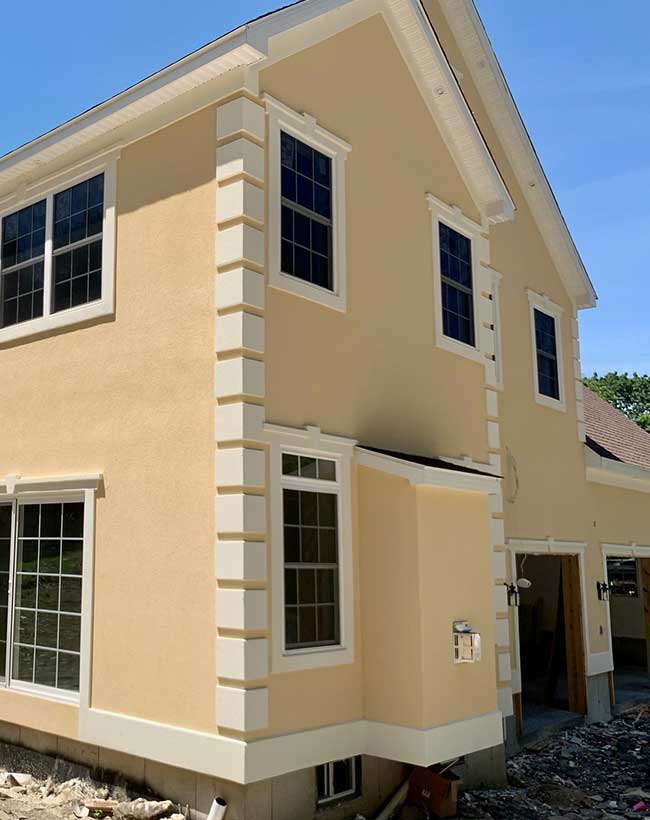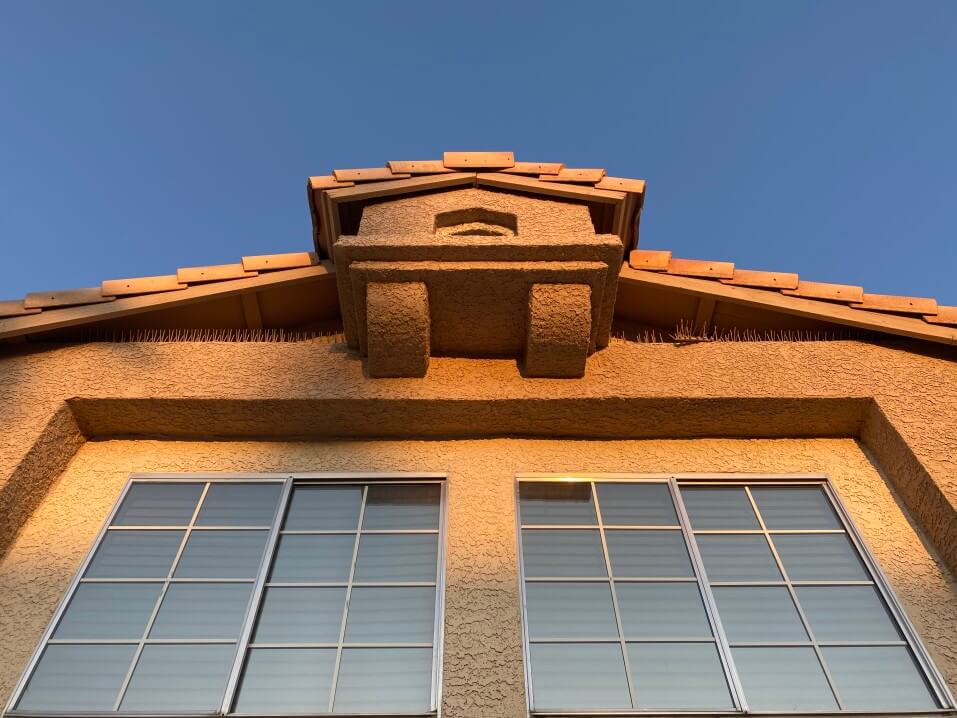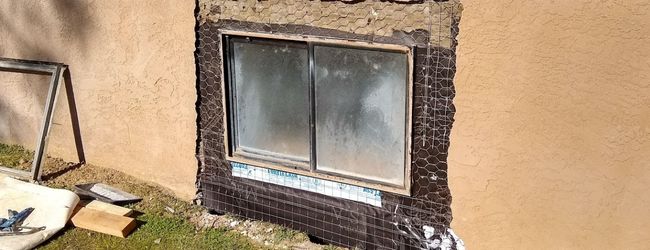Why You Ought to Invest in an Expert Stucco Contractor for Your Building
Why You Ought to Invest in an Expert Stucco Contractor for Your Building
Blog Article
Checking Out the Adaptability of Stucco in Modern Architecture
Stucco has long been acknowledged for its aesthetic charm and adaptability, yet its duty in contemporary design warrants a more detailed examination. This product, historically significant in different building movements, currently serves as a versatile remedy that improves both the practical and visual facets of contemporary frameworks. By exploring its innovative applications, from striking exteriors to energy-efficient designs, one can value how stucco is redefining the boundaries of building expression. This discussion will certainly discover not only its transformative capacity yet likewise the obstacles it faces in a progressing sector.
Historic Importance of Stucco
The historic importance of stucco is extensive, as it has played an essential role in building techniques across numerous cultures for centuries. Originating in old worlds, stucco was utilized by the Egyptians and Greeks as a flexible and long lasting coating for both exterior and interior surfaces. Its flexibility to various environments and capacity to imitate much more pricey products made it a favored choice.
In the Roman age, stucco became a main ornamental component, utilized extensively in public buildings, suites, and temples. The Romans fine-tuned the application methods, permitting elaborate designs and alleviation sculptures. Throughout the Renaissance, stucco experienced a rebirth, specifically in Italy, where it was employed in elaborate exteriors and decorative information, showcasing the virtuosity of the duration.

Modern Applications in Design
Stucco has located renewed relevance in modern-day architecture because of its versatility and aesthetic charm (stucco contractor). This conventional product is significantly utilized in contemporary style, linking the space in between modern-day and classic looks. Architects and designers value stucco for its flexibility, enabling it to be used in various styles-- from minimalist structures to elaborate Mediterranean styles
In residential projects, stucco provides a clean, seamless surface that improves the visual cohesion of facades. Its capability to comply with various forms and surface areas makes it an optimal selection for both brand-new constructions and remodelling projects. Additionally, stucco's toughness and reduced upkeep demands add to its growing popularity in urban settings, where long-lasting products are essential.
Business applications have actually additionally accepted stucco, with lots of services deciding for this product to produce inviting and distinctive storefronts. The use of stucco in public structures, such as colleges and neighborhood centers, showcases its potential for creating aesthetically enticing atmospheres while providing exceptional insulation residential properties.
Shade and Structure Developments
Discovering shade and structure developments in stucco has actually opened up brand-new avenues for designers and engineers, enhancing the material's aesthetic impact in modern-day building and construction. Current innovations in pigment innovation have actually permitted a broader range of shades, enabling developers to develop striking facades that incorporate perfectly with their environments or stick out as vibrant building statements. This flexibility in shade selection supplies architects the capability to stimulate particular emotional feedbacks and balance with local appearances.
Structure developments have actually likewise changed stucco applications. Methods such as shoveling, spraying, and stamping have actually resulted in varied surface coatings, varying from smooth and improved to tactile and tough. These variants not only add to the structure's character however additionally play a vital role in light interaction, enhancing the visual depth and dimensionality of surface areas.
Additionally, the introduction of artificial stucco choices has increased design possibilities, using boosted toughness and weather resistance while preserving visual allure. As engineers remain to explore innovative color combinations and distinctive finishes, stucco stays an essential aspect in modern-day style, showcasing the material's flexibility and classic importance in modern design.
Sustainability and Energy Effectiveness
Technologies in shade and appearance have not just boosted the visual allure of stucco yet likewise led the way for higher Homepage emphasis on sustainability and energy performance in contemporary style. As ecological problems end up being increasingly famous, the construction sector is transforming its focus to materials that contribute favorably to environmental balance.
Stucco, made up primarily of natural products such as lime, sand, and concrete, uses a sustainable alternative to even more resource-intensive structure materials. Its longevity and longevity decrease the need for constant substitutes, thus minimizing waste and source intake gradually. Modern stucco formulas typically include energy-efficient ingredients that enhance insulation residential or commercial properties, reducing heating and air conditioning costs for structures.
The reflective top qualities of stucco can additionally be engineered to mitigate warm absorption, adding to cooler indoor settings and less dependence on artificial climate control systems. By promoting energy conservation and reducing the carbon impact of structures, stucco straightens with the principles of lasting architecture. As contractors and designers take on innovative methods and environment-friendly practices, stucco stands apart as a flexible and liable option in contemporary design.

Instance Research Studies of Stucco Projects
The adaptability of stucco as a structure material is exhibited in different successful building jobs that highlight its useful and aesthetic benefits. One noteworthy instance is the restoration of the historic Casa de la Guerra in Santa Barbara, The Golden State. Using stucco not just maintained the building's Spanish Colonial Revival design yet also boosted its longevity and weather condition resistance, guaranteeing long life while keeping architectural integrity.
One more engaging situation is the contemporary residential job, the Cactus Home in Scottsdale, Arizona. stucco contractor. This striking home features a smooth stucco finish that harmonizes with the bordering desert landscape. The stucco's light color mirrors warmth, adding to energy performance, while the textured surfaces include aesthetic rate of interest
In Addition, the Kings Cross redevelopment in London showcases the versatility of stucco Recommended Reading in city settings. The application of stucco on modern-day mixed-use structures creates a cohesive visual that respects historic context while accepting contemporary layout More about the author principles.
These study demonstrate just how stucco can offer various building objectives, from preservation and power efficiency to aesthetic improvement, making it a functional option in modern-day architecture.
Final Thought
 In conclusion, stucco's historical relevance and contemporary adaptability make it a beneficial product in contemporary style. As shown through numerous situation researches, stucco continues to play an important role in shaping the building landscape of the contemporary period.
In conclusion, stucco's historical relevance and contemporary adaptability make it a beneficial product in contemporary style. As shown through numerous situation researches, stucco continues to play an important role in shaping the building landscape of the contemporary period.
In conclusion, stucco's historical significance and modern versatility make it a valuable material in contemporary design.
Report this page